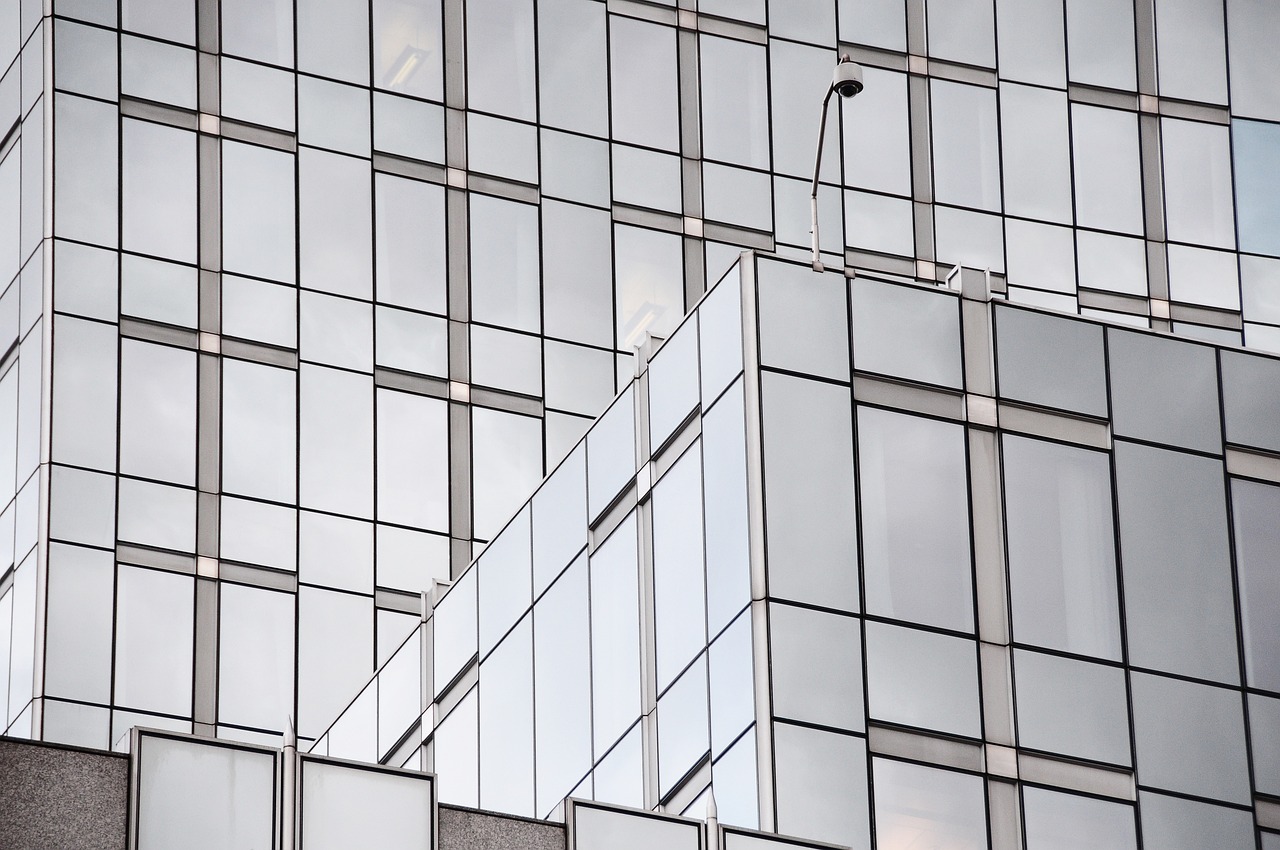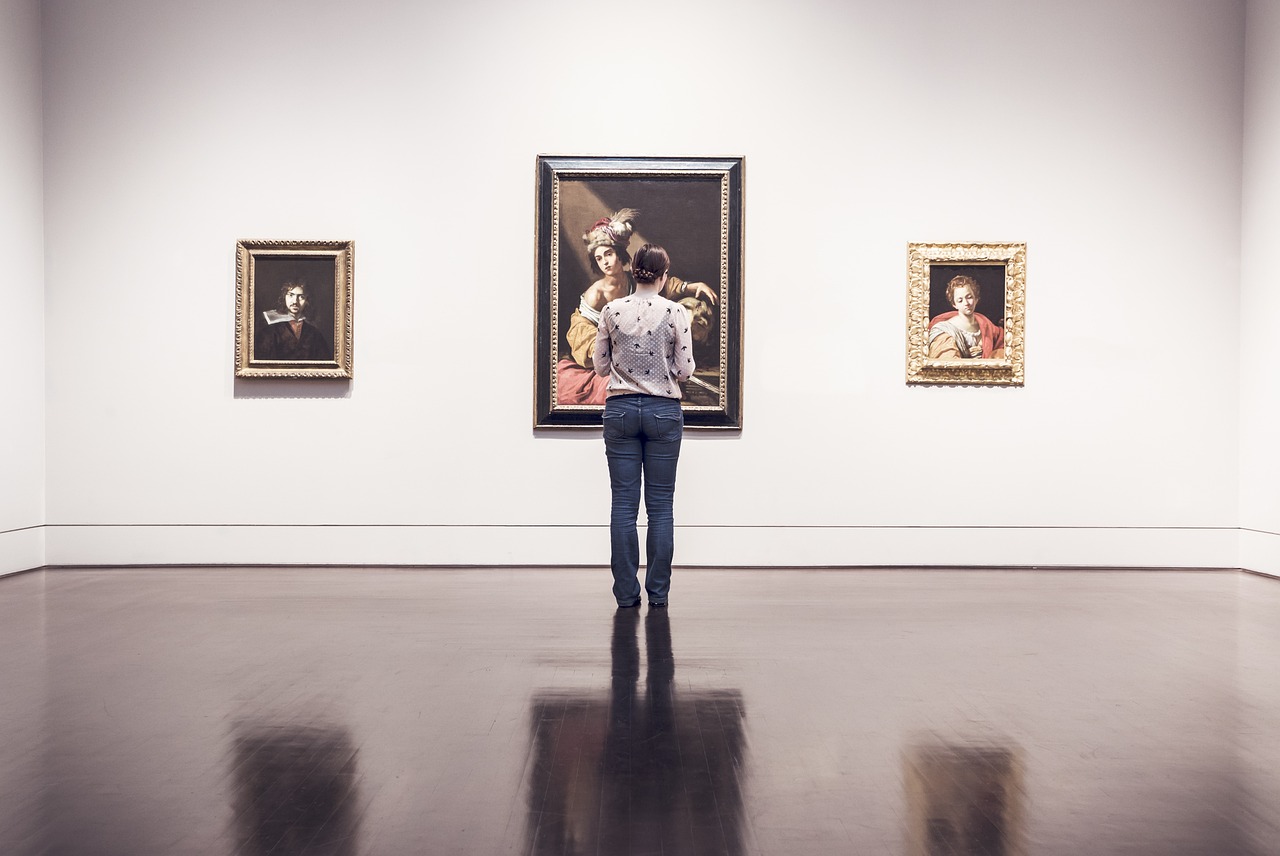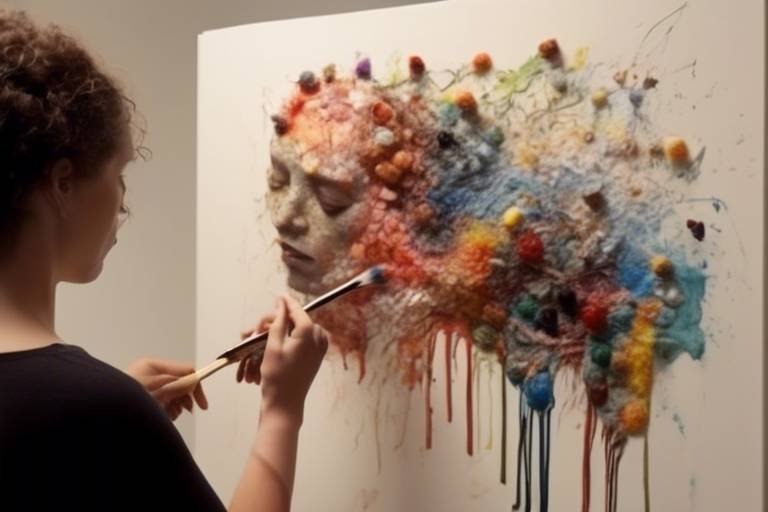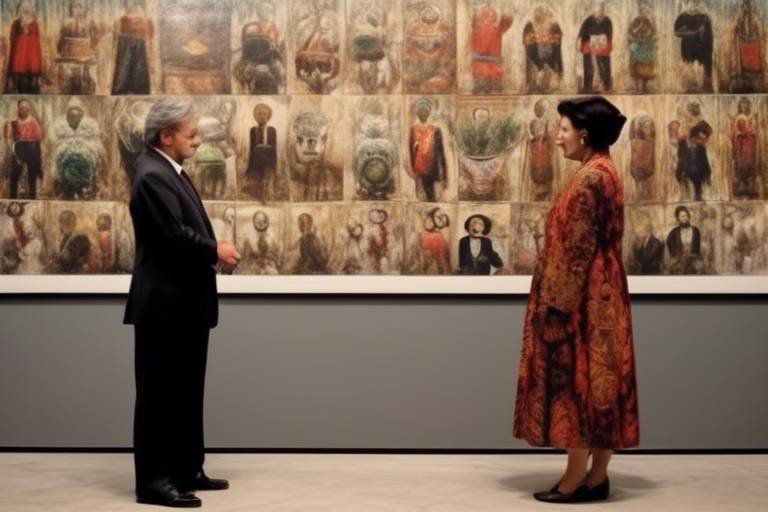The Influence of Historical Events on Artistic Movements
Artistic movements throughout history have been greatly influenced and shaped by major historical events. These events, ranging from political revolutions to global conflicts, have left a lasting impact on the art world, inspiring artists to respond creatively to the changing world around them.
One of the most notable periods where historical events significantly influenced art is the Renaissance. This era, known for its cultural rebirth and flourishing of creativity, was deeply impacted by the political, social, and cultural events of the time. As Italy experienced a resurgence in trade, commerce, and humanism, artists like Leonardo da Vinci and Michelangelo revolutionized artistic styles and techniques, ushering in a new era of innovation and expression.
Similarly, the Baroque art movement emerged in response to the religious turmoil of the 17th century. With Europe torn apart by religious conflicts and upheavals, Baroque artists sought to evoke intense emotions and convey dramatic narratives through their works. The use of dynamic compositions and theatrical lighting became hallmark features of Baroque art, reflecting the tumultuous times in which it was created.
As the Industrial Revolution swept across Europe, art movements like Romanticism and Realism emerged to depict the profound effects of urbanization, mechanization, and social inequality. Artists such as J.M.W. Turner and Gustave Courbet captured the beauty of nature and the harsh realities of industrial life, highlighting the human experience amidst rapid societal changes.
The trauma and devastation of World Wars I and II gave rise to Modernist art movements, characterized by a rejection of traditional norms and a spirit of experimentation. Artists like Pablo Picasso and Wassily Kandinsky embraced abstraction and surrealism, reflecting the chaos and uncertainty of the post-war world through their innovative creations.
Art has also served as a powerful tool for political protest, with artists using their work to respond to social injustices and advocate for change. From the Civil Rights Movement to the Vietnam War, art has been a medium for expressing dissent, solidarity, and hope in the face of adversity.
In the contemporary era, the forces of globalization, technology, and cultural diversity have shaped the postmodern art movement. Artists explore themes of identity, consumerism, and mass media, blurring the boundaries between high and low art and challenging traditional artistic conventions.
Furthermore, the digital age has revolutionized art practices, with artists incorporating new media, virtual reality, and social media platforms to engage with audiences in innovative ways. The boundaries between physical and digital art have become increasingly blurred, opening up new possibilities for creative expression and interaction.
Amid growing concerns about environmental issues, contemporary artists are turning to eco-art as a means of raising awareness about climate change, sustainability, and humanity's relationship with the natural world. Through their works, artists seek to provoke reflection, inspire action, and foster a deeper appreciation for the planet we call home.

The Renaissance and Its Impact
The Renaissance period, spanning from the 14th to the 17th century, was a pivotal time in history that witnessed a remarkable revival of art, literature, and culture. This era was deeply influenced by a series of political, social, and cultural events that reshaped the European landscape. The Black Death, the Hundred Years' War, and the fall of Constantinople all played significant roles in fostering an environment ripe for artistic innovation and creativity.
One of the defining features of the Renaissance was the renewed interest in humanism, a philosophical movement that emphasized the potential and achievements of individuals. This shift in thinking had a profound impact on artistic expression, leading to a focus on realism, perspective, and the human form. Artists like Leonardo da Vinci, Michelangelo, and Raphael emerged during this period, creating masterpieces that reflected the ideals of the time.
The Renaissance was also marked by a surge in patronage from wealthy merchants and powerful rulers, who commissioned works of art to showcase their wealth and prestige. This support allowed artists to experiment with new techniques and materials, pushing the boundaries of what was considered possible in the realm of art.
Furthermore, the printing press, invented by Johannes Gutenberg in the mid-15th century, revolutionized the dissemination of knowledge and ideas. This technological advancement played a crucial role in spreading Renaissance ideals across Europe, fueling the intellectual and artistic fervor of the period.
In conclusion, the Renaissance was a transformative period in history that was deeply influenced by a confluence of historical events. The era's emphasis on humanism, innovation, and artistic expression laid the foundation for future artistic movements and continues to inspire creativity to this day.

Baroque Art in Response to Religious Turmoil
Exploring how major historical events have shaped and influenced various artistic movements throughout history.
During the tumultuous 17th century, Europe was engulfed in religious conflicts and upheavals, particularly stemming from the Protestant Reformation and the Catholic Counter-Reformation. In response to this religious turmoil, the Baroque art movement emerged as a powerful and emotive form of expression. Baroque artists sought to convey intense emotions and drama through their works, using elaborate compositions and vivid contrasts of light and shadow to create a sense of theatricality.
The Baroque period was characterized by a sense of movement and dynamism, with artists like Caravaggio, Bernini, and Rembrandt capturing the intensity of human emotions and religious fervor in their paintings and sculptures. Religious themes were central to Baroque art, reflecting the deeply ingrained spiritual beliefs of the time.
One of the key features of Baroque art was its ability to engage the viewer on an emotional level, drawing them into the scene and evoking a sense of awe and reverence. The use of chiaroscuro, or the contrast between light and dark, added depth and drama to the works, emphasizing the emotional impact of the subject matter.
Through their art, Baroque artists aimed to inspire piety, devotion, and a sense of wonder in the viewer, offering a visual representation of the religious fervor and spiritual turmoil of the period. The Baroque movement not only responded to the religious conflicts of the time but also served as a powerful tool for conveying complex emotions and narratives in a visually compelling manner.
Q: How did historical events influence artistic movements?
A: Historical events such as wars, revolutions, and social movements have often served as catalysts for artistic innovation and expression. Artists respond to the world around them, reflecting the societal changes and upheavals through their work.
Q: What role did technology play in shaping contemporary art?
A: The advent of digital technology has revolutionized the art world, allowing artists to explore new mediums, techniques, and forms of expression. Digital art, virtual reality, and social media platforms have opened up a world of possibilities for artists to engage with audiences and create innovative works.
Q: How does eco-art raise awareness about environmental issues?
A: Eco-art is a form of artistic expression that addresses environmental concerns, such as climate change, pollution, and deforestation. By creating works that highlight these issues, artists aim to provoke thought, spark conversation, and inspire action to protect the planet.

Artistic Responses to Industrialization
Exploring how major historical events have shaped and influenced various artistic movements throughout history.
Discussing how the Renaissance period was influenced by the political, social, and cultural events of the time, leading to a significant shift in artistic styles and techniques.
Examining how the Baroque art movement emerged as a response to the religious conflicts and upheavals of the 17th century, with artists using dramatic compositions to evoke emotion.
During the Industrial Revolution, art movements like Romanticism and Realism emerged in response to the rapid changes brought about by urbanization, mechanization, and social inequality. Artists depicted the effects of industrialization on society, capturing the struggles and triumphs of the working class through their artwork.
Exploring how the trauma and devastation of World Wars I and II led to the emergence of Modernist art movements, characterized by experimentation, abstraction, and a questioning of traditional norms.
Investigating how artists have used their work as a form of political protest, responding to events like the Civil Rights Movement, Vietnam War, and other social injustices through visual expression.
Examining how the postmodern art movement has been shaped by the forces of globalization, technology, and cultural diversity, resulting in a diverse range of artistic styles and approaches.
Discussing the impact of digital technology on contemporary art practices, exploring how artists incorporate new media, virtual reality, and social media platforms to engage with audiences and reflect modern society.
Exploring how contemporary artists are responding to environmental issues through eco-art, using their work to raise awareness about climate change, sustainability, and the relationship between humans and nature.
Stay tuned for answers to commonly asked questions about the influence of historical events on artistic movements!

Modernism and the World Wars
Modernism in art emerged as a direct response to the trauma and upheaval caused by World Wars I and II. The unprecedented scale of destruction and human suffering during these conflicts shattered traditional beliefs and values, prompting artists to question established norms and experiment with new forms of expression. The chaos and disillusionment of the wars fueled a desire for change and innovation, leading to the birth of Modernist art movements characterized by a rejection of realism and a focus on abstraction and subjective interpretation.
Artists during this period sought to capture the essence of the rapidly changing world, reflecting the fragmented and uncertain nature of post-war society. The impact of the World Wars on artistic expression was profound, as artists grappled with themes of alienation, existential angst, and the breakdown of traditional institutions. Modernist art became a vehicle for exploring the complexities of human experience in the face of unprecedented global conflict.
One of the key features of Modernism was its emphasis on experimentation and pushing the boundaries of artistic conventions. Artists like Pablo Picasso, Wassily Kandinsky, and Marcel Duchamp revolutionized the art world with their innovative approaches to form, color, and composition. The avant-garde spirit of Modernism encouraged artists to break free from traditional constraints and explore new ways of seeing and interpreting the world.
The World Wars not only influenced the subject matter of art but also revolutionized the way art was created and consumed. The rise of photography and cinema as mass media platforms during this period challenged traditional notions of representation and authenticity in art. Artists responded to these technological advancements by incorporating elements of collage, montage, and abstraction into their work, blurring the boundaries between different art forms.
Overall, Modernism emerged as a powerful artistic response to the unprecedented upheaval and devastation caused by the World Wars. By embracing change, innovation, and a spirit of rebellion, Modernist artists paved the way for new artistic movements and laid the foundation for the diverse and dynamic art world we see today.

Art as Political Protest
Exploring how major historical events have shaped and influenced various artistic movements throughout history.
Discussing how the Renaissance period was influenced by the political, social, and cultural events of the time, leading to a significant shift in artistic styles and techniques.
Examining how the Baroque art movement emerged as a response to the religious conflicts and upheavals of the 17th century, with artists using dramatic compositions to evoke emotion.
Analyzing how the Industrial Revolution influenced art movements like Romanticism and Realism, as artists depicted the effects of urbanization, mechanization, and social inequality.
Exploring how the trauma and devastation of World Wars I and II led to the emergence of Modernist art movements, characterized by experimentation, abstraction, and a questioning of traditional norms.
Investigating how artists have used their work as a form of political protest, responding to events like the Civil Rights Movement, Vietnam War, and other social injustices through visual expression.
Examining how the postmodern art movement has been shaped by the forces of globalization, technology, and cultural diversity, resulting in a diverse range of artistic styles and approaches.
Discussing the impact of digital technology on contemporary art practices, exploring how artists incorporate new media, virtual reality, and social media platforms to engage with audiences and reflect modern society.
Exploring how contemporary artists are responding to environmental issues through eco-art, using their work to raise awareness about climate change, sustainability, and the relationship between humans and nature.
Stay tuned for the frequently asked questions section at the end of this article for more insights and clarifications on the influence of historical events on artistic movements.

Postmodernism and Globalization
Postmodernism emerged as a response to the forces of globalization, technological advancements, and cultural diversity that characterized the late 20th century. This artistic movement challenged traditional norms and conventions, embracing a diverse range of styles and approaches that reflected the complexities of a rapidly changing world. Postmodern artists rejected the idea of a singular narrative or universal truth, instead celebrating pluralism and hybridity in their work.
Globalization played a significant role in shaping postmodern art, as artists drew inspiration from a wide range of cultural influences and perspectives. The interconnected nature of the global economy and the ease of communication facilitated the exchange of ideas and artistic practices across borders, leading to a more diverse and inclusive art world. Postmodern artists often incorporated elements from different cultures, traditions, and historical periods in their work, blurring the boundaries between high and low culture.
Technology also had a profound impact on postmodern art, with artists exploring new media and digital tools to create innovative and interactive artworks. The rise of the internet and social media platforms provided artists with new ways to engage with audiences and challenge traditional notions of authorship and originality. Postmodern art often reflected the fragmented and chaotic nature of the digital age, with artists experimenting with video, installation, performance, and other non-traditional forms of expression.
Furthermore, postmodernism questioned the concept of the artist as a solitary genius, emphasizing collaboration, participation, and collective creativity. Artists working in this movement often collaborated with other artists, curators, and audiences to create immersive and interactive experiences that challenged the boundaries between art and everyday life. Postmodern art sought to democratize the art world, making art more accessible and inclusive to a wider audience.

Art in the Digital Age
Exploring how major historical events have shaped and influenced various artistic movements throughout history.
Discussing how the Renaissance period was influenced by the political, social, and cultural events of the time, leading to a significant shift in artistic styles and techniques.
Examining how the Baroque art movement emerged as a response to the religious conflicts and upheavals of the 17th century, with artists using dramatic compositions to evoke emotion.
Analyzing how the Industrial Revolution influenced art movements like Romanticism and Realism, as artists depicted the effects of urbanization, mechanization, and social inequality.
Exploring how the trauma and devastation of World Wars I and II led to the emergence of Modernist art movements, characterized by experimentation, abstraction, and a questioning of traditional norms.
Investigating how artists have used their work as a form of political protest, responding to events like the Civil Rights Movement, Vietnam War, and other social injustices through visual expression.
Examining how the postmodern art movement has been shaped by the forces of globalization, technology, and cultural diversity, resulting in a diverse range of artistic styles and approaches.
Discussing the impact of digital technology on contemporary art practices, exploring how artists incorporate new media, virtual reality, and social media platforms to engage with audiences and reflect modern society.

Environmental Concerns and Eco-Art
As the world grapples with pressing environmental issues, artists have turned to their craft as a powerful tool for raising awareness and provoking change. Eco-art, a genre that emerged in response to growing concerns about climate change and ecological sustainability, encompasses a diverse range of artistic practices that address the intricate relationship between humans and the environment.
Through their work, eco-artists seek to challenge societal norms, spark conversations, and inspire action to protect our planet for future generations. These artists often use unconventional materials, such as recycled objects, natural elements, and sustainable resources, to create thought-provoking pieces that highlight the urgency of environmental conservation.
One prominent theme in eco-art is the exploration of the impact of human activities on the natural world. Artists use their creativity to draw attention to deforestation, pollution, species extinction, and other environmental crises, urging viewers to reflect on their own ecological footprint and consider ways to mitigate harm to the planet.
Moreover, eco-art often blurs the boundaries between art and activism, encouraging viewers to engage with environmental issues on a personal and emotional level. By evoking empathy, awe, and introspection, these artworks aim to cultivate a deeper sense of connection to nature and inspire collective efforts towards sustainable living practices.
In addition to traditional art forms, eco-artists also embrace innovative technologies and interdisciplinary approaches to address environmental concerns. From interactive installations that simulate natural ecosystems to community-based projects that promote environmental stewardship, eco-art continues to evolve as a dynamic and impactful force within the contemporary art world.
Ultimately, eco-art serves as a visual testament to the intricate beauty and fragility of our planet, inviting viewers to contemplate the interdependence of all living beings and the urgent need for environmental stewardship. By harnessing the transformative power of art, eco-artists strive to ignite a global conversation on sustainability, resilience, and the profound connection between humanity and the natural world.
Frequently Asked Questions
- What is the significance of historical events on artistic movements?
Historical events play a crucial role in shaping artistic movements by influencing the societal, political, and cultural context in which artists create their work. These events serve as catalysts for change, sparking new ideas, styles, and techniques that reflect the prevailing attitudes and values of the time.
- How did the Renaissance period impact art?
The Renaissance period marked a significant shift in artistic expression, characterized by a revival of classical ideals, humanism, and innovation in techniques such as perspective and realism. This period saw the emergence of renowned artists like Leonardo da Vinci, Michelangelo, and Raphael, who produced timeless masterpieces that continue to inspire artists today.
- Why did Baroque art focus on dramatic compositions?
Baroque art emerged in response to the religious turmoil of the 17th century, with artists seeking to evoke intense emotions and create a sense of awe and grandeur in their works. The dramatic compositions, use of light and shadow, and theatricality of Baroque art aimed to engage viewers on a visceral level, conveying the power and passion of the subjects depicted.
- How did the Industrial Revolution influence art movements?
The Industrial Revolution brought about profound social and economic changes, which artists responded to by depicting the impact of urbanization, mechanization, and social inequality in their works. Movements like Romanticism and Realism emerged as artists sought to capture the human experience amidst the rapid transformation of society during this period.
- What role does art play in political protest?
Art has long been used as a powerful tool for political protest, allowing artists to express dissent, raise awareness, and advocate for social change. Through visual expression, artists have addressed issues such as civil rights, war, and social injustices, challenging the status quo and giving voice to marginalized communities.
- How has the digital age impacted contemporary art?
The digital age has revolutionized contemporary art practices, enabling artists to explore new media, virtual reality, and social media platforms as tools for creative expression and engagement with audiences. Artists today harness technology to reflect the complexities of modern society, blurring the boundaries between the physical and digital realms.



















